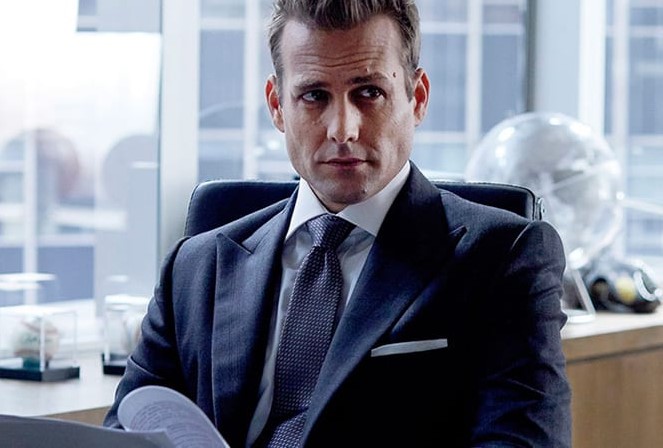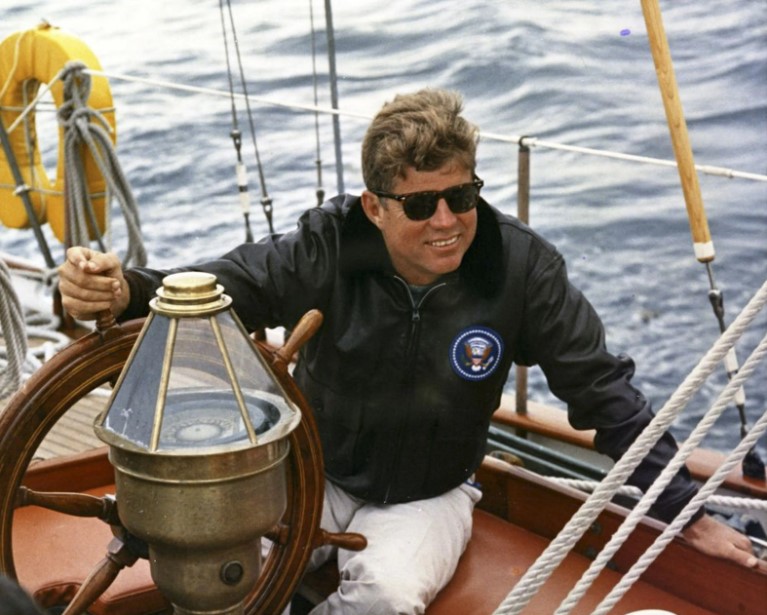What you wear says a lot about who you are, how you feel, and the message you want to send. Depending on the situation, the image you present can tell everyone all they need to know about you. The Signature Style Venn Diagram shows you all the different ways you can use men’s style to express yourself within your own personality, hobbies, and industry. One of those style archetypes has a very specific use in men’s fashion.
The “Commander in Chief” is the leader of the pack, the man at the front of the room. He stands on stage at the beginning of every meeting and gives the last word on every issue. He is the man who starts businesses, solves problems, and commands the trust and respect of everyone within his sphere of influence. Of course, his talents and drive are often why people follow them, but their appearance projects the first impression that hooks people in and inspires them to commit to the mission. While many of them wear ensembles that can feel a little bland, traditional, or even boring, there are reasons for everything they wear. Here are the three rules to follow to step up and be a leader as the Commander in Chief.

Embrace subtlety
Why is this called the Commander in Chief style? Because presidents and world leaders are the best examples of how and why these rules work. Regardless of politics, it’s easy to find similarities between presidents, at least in terms of style. They stick to subtle looks; they don’t need a lot of bright colors, wild patterns, or flashy ensembles to capture others’ attention. While presidents are the best example, CEOs and industry leaders are the same. They’re the best at what they do, and their talents speak for themselves.
The easiest way to stick to subtle ensembles is to think about colors and patterns. When you look at the most prominent leaders, they’re almost always in blues and grays. From dark navy to bright blue, from light gray to classic charcoal, these colors are simple but sharp. They have been classics for a long time and have staying power for a reason. Blues and grays on the outside are only the beginning of classics in men’s apparel. Underneath these suits are the primary colors of dress shirts; whites, creams, and light blues will go with almost any suit and tie combo. They have the added bonus of never taking the attention away from the most essential aspect of any ensemble: You.

Know what your tie is saying
The Commander in Chief is almost always in a suit. Now that you have the right suit color with complementing subtle color, it’s time to choose the right tie to complete the look and send the right message. If you’ve watched presidential debates, you probably already know where this is headed: The power tie. This is the kind of tie that evokes leadership, but there are other reasons behind every tie you see on the screen while leaders speak.
Red: This is the traditional power tie. Red conveys dominance; think Tiger Woods in his signature red polo. It shows you mean business in the professional world.
Blue: Not every politician can wear a red tie. You want to dominate your sphere, but you also need your followers to have faith in you. Blue conveys trust and confidence, which is what you want when leading 330 million people.
Yellow: Sometimes you want to be more dominant and aggressive than what the blue tie can offer, but you don’t want to lose the image of trust and confidence that can happen with red. The perfect balance is yellow. Softer but still dynamic, the yellow tie is the Commander in Chief’s best friend.
Green, orange, gray, purple, and black: All of these colors have meanings, and all of them send a message. However, most leaders stick to the three primary colors and let their ideas lead the way when standing in front of those that put their trust in them.

Let loose in your off time
Now for the most important aspect of being the Commander and Chief: Letting lose. You can’t be on all the time. Your body and mind need a break. When you get away from the office, even if it’s the never-ending-always-demanding oval one, give yourself permission to cut loose and have fun.
When you’re looking for casual clothing to wear when you’re finally out of the suit, embrace brighter colors. Bold patterns and eye-catching ensembles can provide the kind of contrast that others like to see. While you are driven, focused, and somewhat intimidating in your daily pursuits, you are relaxed, approachable, and relatable when off the clock.
Indulge in clothing that contrasts the usual dark suits and professional attire by using colors and patterns or themes. For instance, John F. Kennedy was known for embracing a nautical look outside the office. He wore white chinos, light polos, and stylish glasses to make him more human than the exalted leader of the free world he was the rest of the time. You can choose to go more rugged with flannels, jeans, boots, and anything else that differs from the buttoned-up suit and tie.
Now that you have the image down, use your men’s style archetype to step up and lead your people to prosperity, Mr. President.



